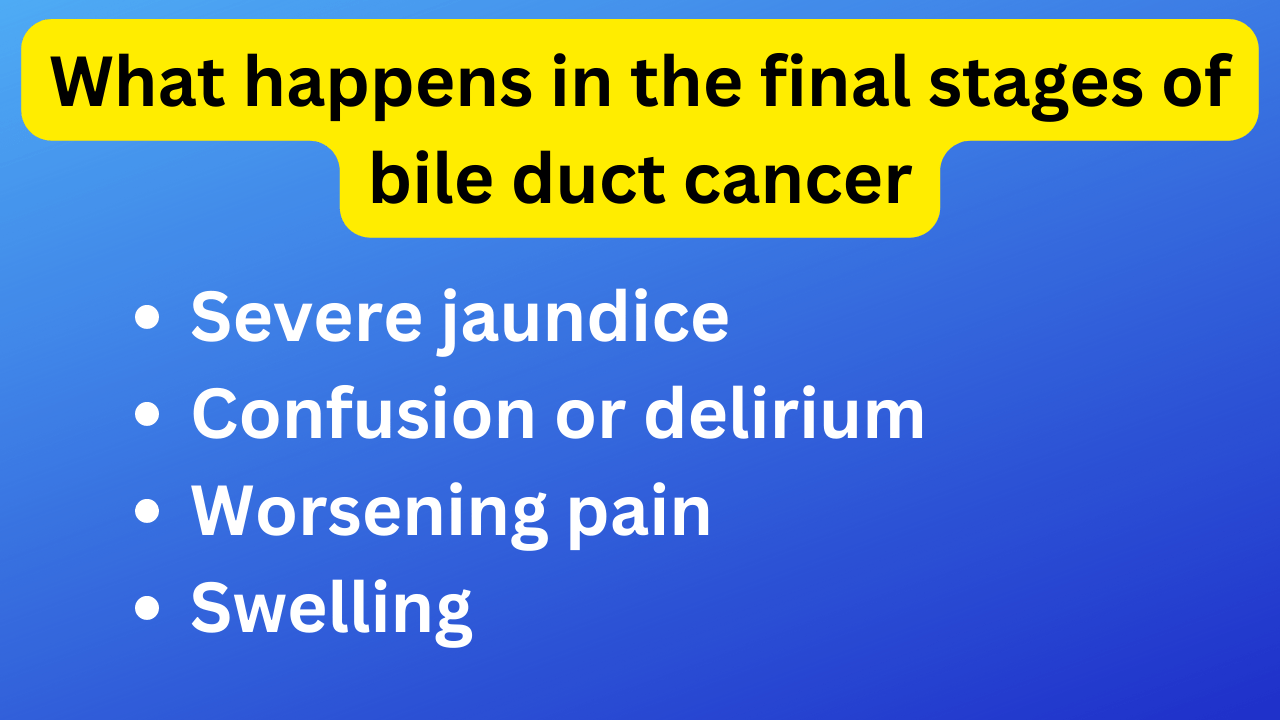Here you will know “What happens in the final stages of bile duct cancer“.
The bile duct is a tube-like structure that carries bile from the liver and gallbladder to the small intestine. Bile is a greenish-yellow fluid that is produced in the liver and stored in the gallbladder.
It plays an important role in the digestion of fats and helps to absorb fat-soluble vitamins.
The bile duct system includes the hepatic ducts, which carry bile out of the liver, and the common bile duct, which is formed by the union of the hepatic ducts and carries bile to the small intestine.
The common bile duct joins with the pancreatic duct just before it enters the small intestine. This junction is called the hepatopancreatic ampulla or the Ampulla of Vater.
Intrahepatic cholangiocarcinoma causes
Bile duct cancer, also known as cholangiocarcinoma, is a rare type of cancer that develops in the cells that line the bile ducts.
Following are the risk factors that may increase the causes developing bile duct cancer.
- Gallstones: Chronic inflammation caused by gallstones can increase the risk of bile duct cancer.
- Bile duct abnormalities: Certain congenital abnormalities of the bile ducts, such as choledochal cysts or Caroli disease, can increase the risk of bile duct cancer.
- Environmental factors: Exposure to certain chemicals or toxins, such as thorium dioxide or dioxin, may increase the risk of bile duct cancer.
- Chronic inflammation: Long-term inflammation of the bile ducts due to conditions such as primary sclerosing cholangitis or hepatitis B or C infection can increase the risk of bile duct cancer.
- Age and gender: Bile duct cancer is more common in people over the age of 50, and men are more likely to develop this type of cancer than women.
- Liver disease: Certain liver diseases, such as cirrhosis, may increase the risk of bile duct cancer.
Cholangiocarcinoma signs and symptoms
There are variety of signs and symptoms, which may vary depending on the location and extent of the tumor.
Some common signs and symptoms of cholangiocarcinoma may include:
- Jaundice: Yellowing of the skin and whites of the eyes is a common symptom of bile duct cancer. This occurs due to the buildup of bilirubin in the blood.
- Fatigue: Feeling tired and weak even with sufficient rest can be a symptom of cholangiocarcinoma.
- Abdominal pain: Pain in the upper right quadrant of the abdomen may occur due to the pressure caused by the tumor on nearby organs and tissues.
- Unexplained weight loss: Significant weight loss without trying can be a symptom of bile duct cancer.
- Itching: Excessive itching, also known as pruritus, may occur due to the buildup of bile salts in the skin.
- Fever and chills: Infection or inflammation associated with bile duct cancer may cause fever and chills.
- Loss of appetite: Bile duct cancer can cause a loss of appetite and unintentional weight loss.
What happens in the final stages of bile duct cancer
Following are the common symptoms that may occur in the final stages of bile duct cancer include:
- Severe jaundice: Jaundice can become more severe as the cancer progresses, leading to dark urine, pale stools, and a yellowish tint to the skin and eyes.
- Worsening pain: Pain in the abdomen, back, or other areas may become more severe as the cancer spreads.
- Difficulty eating and drinking: As the cancer progresses, eating and drinking may become more difficult due to pain, nausea, or other symptoms.
- Confusion or delirium: Advanced cancer can affect the brain and cause confusion, memory loss, or other cognitive changes.
- Breathing difficulties: If the cancer spreads to the lungs or causes fluid buildup in the chest, it can become difficult to breathe.
- Swelling: Swelling of the legs, feet, or other areas may occur due to fluid buildup in the body.
Here’s the video of “What happens in the final stages of bile duct cancer“.
